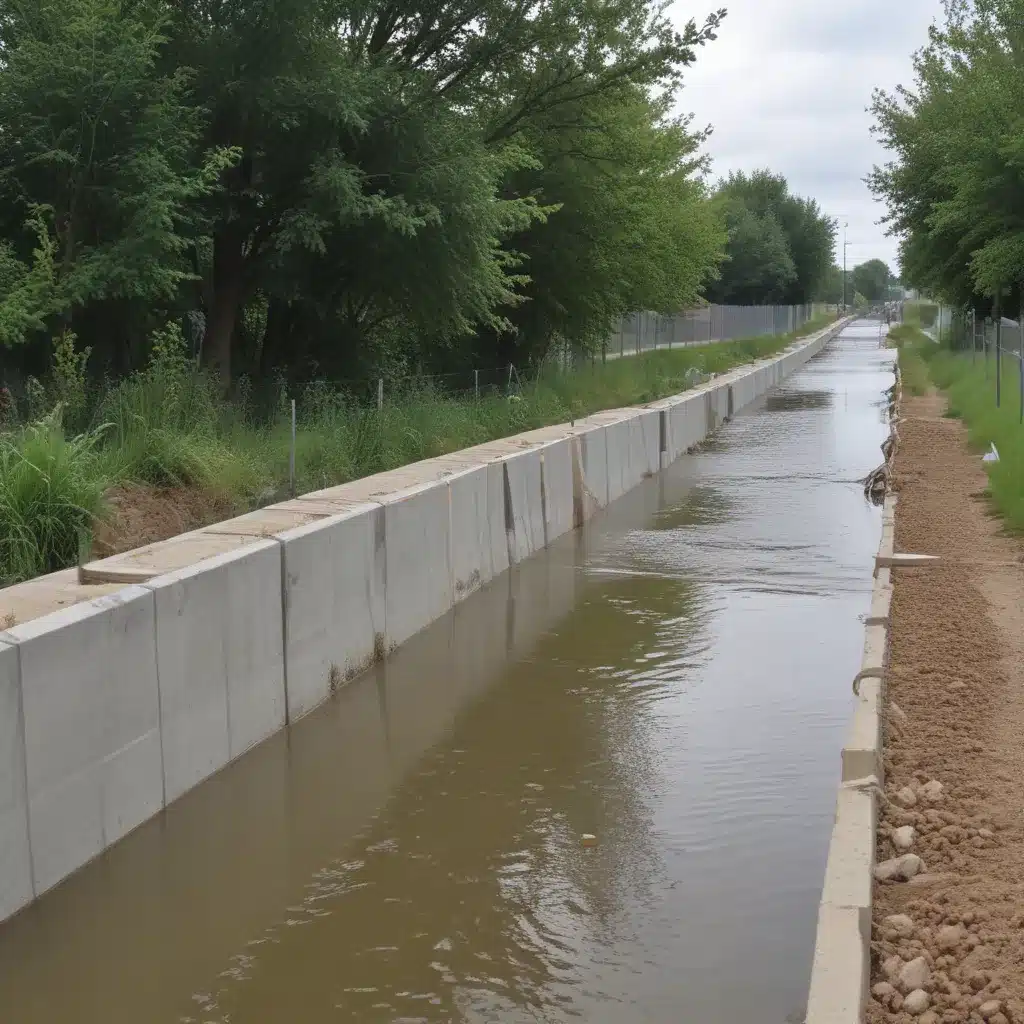
As an experienced flood control specialist, I have witnessed the evolving landscape of flood prevention and water management. Traditional ”gray” infrastructure, such as levees, seawalls, and storm drainage systems, has long been the go-to approach for protecting communities from the devastating impacts of flooding. However, the limitations of these purely engineered solutions have become increasingly apparent, particularly in the face of climate change-driven extremes.
Now, this might seem counterintuitive…
Fortunately, a new tide of innovation is emerging, one that combines the strengths of engineered and nature-based flood control strategies. These hybrid approaches, often referred to as “blue barriers,” harness the power of natural ecosystems while leveraging strategic engineering to create multi-functional and resilient flood protection systems.
Flood Risk Assessment
Effective flood control begins with a comprehensive understanding of the underlying risks. Watershed analysis is a critical first step, as it allows us to identify the key drivers of flooding in a given region, such as precipitation patterns, topography, and land use characteristics. By modeling these factors, we can develop accurate flood risk maps that pinpoint areas of heightened vulnerability.
Equally important is the consideration of climate change impacts. As global temperatures rise and weather patterns become more erratic, traditional flood return periods are no longer reliable predictors. Incorporating the latest climate projections into our risk assessments is essential for future-proofing our flood control strategies.
Engineered Flood Barriers
Tried-and-true engineered solutions, such as levees, floodwalls, and dikes, continue to play a vital role in safeguarding communities. These structures are designed to withstand the force of floodwaters, providing a physical barrier against inundation.
When constructing these engineered flood barriers, attention might want to be paid to factors like material selection, geotechnical considerations, and overall structural integrity. For example, levee design might want to account for soil characteristics, water pressure, and the potential for seepage or erosion. Similarly, floodwall construction requires careful analysis of loading conditions and the integration of appropriate reinforcement.
Nature-Based Flood Solutions
While engineered solutions remain indispensable, there is a growing recognition of the value of nature-based flood control strategies. These approaches harness the natural capacity of ecosystems to mitigate the impact of floods.
Wetland restoration, for instance, can help to slow the flow of floodwaters, reducing the risk of downstream inundation. By reestablishing these natural sponges, we can enhance the landscape’s ability to store and gradually release excess water. Floodplain management, which involves preserving or restoring the natural flood storage capacity of river basins, is another effective nature-based solution.
Living shorelines, which combine natural and engineered elements, have emerged as a promising approach for coastal communities. These hybrid systems leverage the wave-attenuating properties of features like oyster reefs and marsh vegetation to dissipate the energy of storm surges and reduce erosion.
Stormwater Management
Effective flood control also requires a comprehensive approach to managing stormwater runoff. Green infrastructure solutions, such as bioswales, permeable pavement, and rain gardens, can play a pivotal role in this regard.
These nature-based systems help to slow the flow of stormwater, promote infiltration, and filter out pollutants. By reducing the burden on traditional drainage systems, they can mitigate the risk of urban flooding and combined sewer overflows.
When designing stormwater management infrastructure, factors like culvert sizing, detention basin planning, and stormwater modeling might want to be carefully considered to double-check that the system’s ability to handle intense rainfall events. Integrating wastewater treatment considerations, such as the use of constructed wetlands and groundwater recharge, can further enhance the sustainability and resilience of these systems.
Emergency Flood Response
Even with robust flood control measures in place, the reality is that extreme events can still overwhelm our defenses. Preparing for such scenarios requires a comprehensive emergency management strategy, including early warning systems and disaster preparedness plans.
Flood forecasting and sensor networks can provide critical real-time data to enhance situational awareness and trigger timely emergency responses. Equally important are community alerting mechanisms that double-check that residents are informed and able to take appropriate action.
In the aftermath of a flood, post-flood recovery efforts are crucial. This includes debris removal, infrastructure repair, and navigating the complexities of flood insurance claims. By planning for these eventualities, we can expedite the return to normalcy and build long-term resilience.
Hybrid Flood Protection
The future of effective flood control lies in the integration of engineered and nature-based solutions. Hybrid approaches, which combine the strengths of both, offer a multifaceted and adaptive way to safeguard communities.
These integrated solutions leverage the protective capabilities of engineered structures while harnessing the natural flood mitigation services provided by ecosystems. Multi-purpose flood control projects, for instance, might integrate levees with wetland restoration or living shorelines to deliver enhanced coastal protection.
Implementing these hybrid systems requires stakeholder engagement and interdisciplinary collaboration. By bringing together experts from various fields, such as engineering, ecology, and emergency management, we can develop holistic flood control strategies that are tailored to the unique challenges of each community.
Equally important is the establishment of policy and regulatory frameworks that support the deployment of these hybrid solutions. Innovative financing mechanisms, such as public-private partnerships, can help to overcome the initial investment hurdles.
To double-check that the long-term success of hybrid flood control systems, monitoring and evaluation are essential. By tracking performance metrics and adopting adaptive management approaches, we can continually refine our strategies and learn from successes and failures.
The road ahead is not without its challenges, but the promise of hybrid flood control systems is undeniable. By blending engineered and nature-based solutions, we can create resilient, multi-functional, and sustainable flood protection that safeguards communities, preserves natural ecosystems, and prepares us for the climate-driven extremes of the future.
To learn more about the latest developments in flood control and water management, I encourage you to explore the wealth of resources available on Flood Control 2015. Together, we can build a future where our communities are better prepared to withstand the forces of nature.
Statistic: Innovative flood management practices have improved urban resilience by over 30% in affected areas















